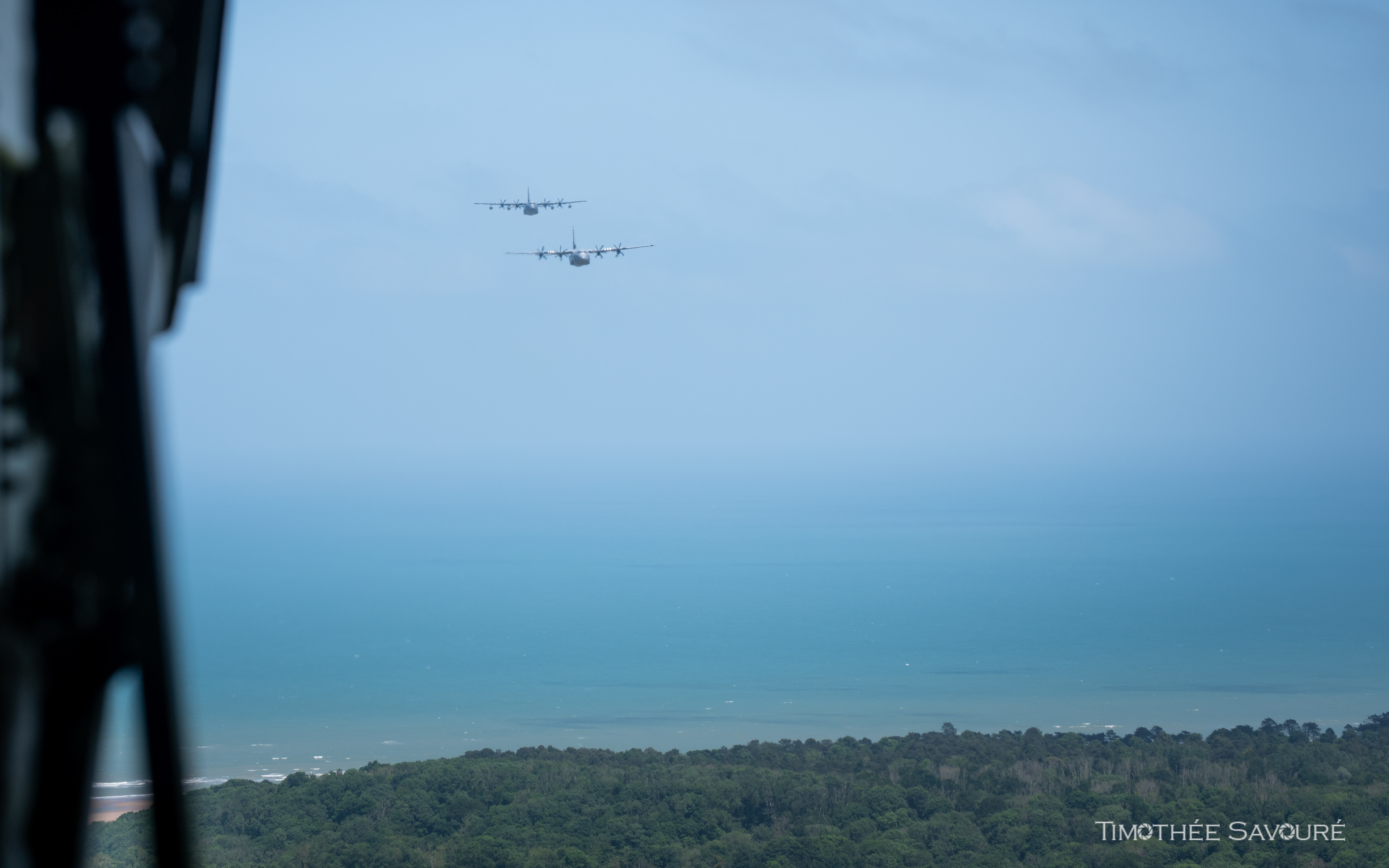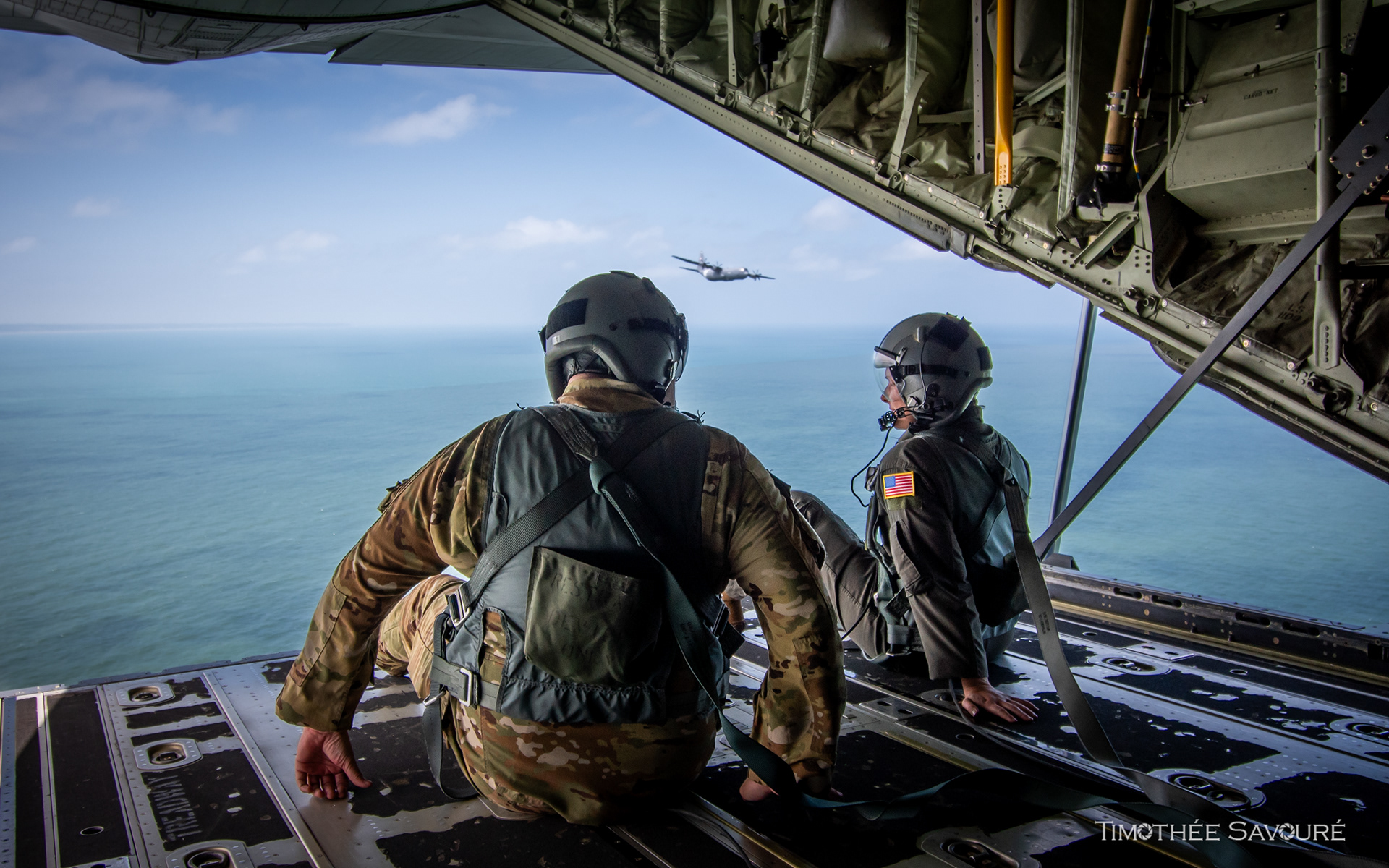D-Day 80th anniversary
Commemorations play a vital role in preserving the memories of historical events and honoring those who made significant sacrifices. One of the most important moment in modern European history is Operation Overlord which occurred on June 6, 1944. This monumental military operation marked a significant turning point in World War II. The invasion of Normandy was a result of months of planning and unprecedented cooperation among Allied forces, involving thousands of troops who stormed the beaches of Normandy to liberate Western Europe from Nazi occupation. The scale of the operation, which included air, land, and sea assaults, demonstrated the Allies' commitment to defeating tyranny and restoring freedom. The bravery and sacrifices of the soldiers on that day laid the groundwork for the eventual Allied victory and the end of the war in Europe.
As we approached the 80th anniversary of Operation Overlord, I wanted to turn back to this historical event and to remember those who fought for the freedom. This article focuses on the commemorative events planned to honor this milestone. I will share my personal experience aboard a C-130 aircraft during one of these commemorations, offering a unique perspective on the efforts to keep the memory of this historic day alive.
In June 2024, the 80th anniversary of the Normandy Invasion was commemorated with great reverence across various symbolic sites in Normandy. Ceremonies were held at key locations such as Omaha Beach and Utah Beach, where American troops faced some of the fiercest fighting, but also Sainte-Mère l'Eglise which was one of the main spots for aerial paratroopers drops. The heart of the commemorations was in Carentan, which was the strategic point of junction between Omaha and Utah Beach, and was the place where, after six days of fierce fighting and losing half of its troops, the 101st Airborne Division opened the glorious road to victory for the American army. Many paratroopers jumped from US Air Force and European military transporters, as well as legacy aircraft. More than 10 C-47s Dakota aircraft came to France and UK to take part to the commemorations. In Carentan, seven UH-60M Black Hawks as well as four CH-47F Chinooks were stationned and performed demonstration flights at various moments of the week. Joe Biden, President of the USA, visited France in June 2024 to pay tribute to the American soldiers who fought during WWII. He landed in Paris Orly at first and made the trip to Normandy with Marine One, the VH-3D Sea King helicopter of the HMX-1 squadron.

VC-25B stationned in Paris Orly during Joe Biden's visit

Ramstein-based C-130J-30 in Cherbourg preparing for its flight

UH-60M Black Hawk in Carentan

Texas Air Guard C-130J-30 stationned in Cherbourg

UH-60M Black Hawk in Carentan

MC-130J on Cherbourg's tarmac

Little Rock, Arkansas based C-130J-30 | 14-5802

VC-25B stationned in Paris Orly during Joe Biden's visit
Onboard a US Air Force C-130
On June 2nd, 2024 I had the privilege to take part to a flight onboard a US Air Force C-130J-30 Super Hercules over Normandy. After a few weeks of organization and a 4-hour drive to Cherbourg airport, where a dozen US Herks were stationned during the commemorations, it was time to meet with the US Air Force. The briefing had already started between the crews of 4 aircraft and I was allowed to step in. The main subjects treated during this 1-hour briefing were the detail of the mission, the weather, hazards in the areas of the flight (drones, birds, VFR aircraft), NOTAMs, and various other subjects importants to brief for the crews. It was one of the first of many C-130 formation flights of the commemorations, the aircraft having arrived just a few days before, but being planned to perform flypasts during the whole week leading to June 6th.
The day's mission consisted in a 4-ship, 3 hours long formation flight with two main targets. The first one was over the Mont-Saint-Michel ceremony in remembrance of the paratroops who dropped into the invasion force that took station off the coast. The second target was a parade over Monument Signal in Carentan-Les-Marais, where 25.000 people attended a ceremony. My aircraft's callsign would be Herky 81, the leader of the formation.
One hour before the planned take-off time, after a quick lunch, it was time to step towards the aircraft. The Cherbourg apron was full of Herks, with no less than 13 C-130s from the US Air Force stationed there. Our aircraft was serial number 14-5802, a Little Rock, Arkansas-based Hercules flying for the 62nd Airlift Squadron. The plane had made the flight from mainland USA to France just a couple of days before, so it would be the first commemoration flight. The aircraft, like other C-130s which came to Normandy this year, wore a D-Day code on the side. Indeed, in 1944 the hundreds of C-47s from the different units participating in the invasion had to be told apart, so they all had a code representing their squadron. The codes were a letter and a number written on the side of the fuselage in white. This year, 14-5802 was coded E5 as a remembrance of the 62nd Troop Carrier Squadron, part of the 314th Troop Carrier Group operating from Saltby airfield. The group was part of the bigger 52nd Troop Carrier Wing.
When we boarded, the pilots were already conducting the pre-flight checks, entering the mission details into the mission computer. The crew of the day comprised two pilots, two loadmasters, the USAFE Public Affairs Officer, a USAF photographer, and four journalists, including myself. After a quick safety briefing from the loadmaster, we could choose our seats. The aircraft, being in paratrooper drop configuration, had plenty of space to put our bags and sit wherever we wanted. At 1345L, it was time for start-up. The loadmaster closed the ramp, the pilots started the engines, and the aircraft started to shake as, one by one, the four Rolls-Royce AE 2100 D3 turboprop engines came to life. Buckled up, we could only feel when the C-130 started to taxi, since there was no view outside due to the few windows inside the cabin. A quick taxi to the runway threshold, then after a short backtrack, we were lined up on runway 10 of Cherbourg airport. When we got clearance from ATC, the aircraft's powerful engines made us accelerate on the runway, and in just a few seconds, we were airborne. It was not long until we reached our cruising altitude of 1,000 feet, since the flight was low-level from beginning to end.
During the first part of the flight, we flew over the English Channel, especially along the entire length of the Normandy beaches where we performed several overflights. We were joined by Herky 82 and Herky 83, a Ramstein-based C-130J-30 and a Mildenhall-based MC-130J Commando II. Although they were too far to take interesting air-to-air pictures, it was fascinating to fly in formation with them.
After a few minutes, we were told that the crew would open the ramp so we could see outside from the rear of the aircraft. The loadmasters put on their safety harnesses, and we buckled up in the aft row of seats. The ramp slowly opened, and we could finally see outside. At that time, we were flying over the water, 500 feet below us. I have to admit that the view was absolutely breathtaking: seeing the sea pass by underneath, with a pair of Hercules behind us, is definitely not a usual sight! We did a few turns over the English Channel, and after 15 minutes of open ramp, the aircraft headed towards the other side of Cotentin. The crew closed the ramp, and since we began to fly over land, turbulence started to become very significant. I had to lie down due to my stomach beginning to get sensitive, mostly because of not being able to see outside with the aircraft shaking so much.
We finally arrived over Mont Saint-Michel for the first paradrop of the day. Our aircraft did not carry any jumpers, but the other two Herks did. After a beautiful pass over the monument, we headed north to hold before the next target, about an hour later. During this time, we flew along the coast and over Granville, with a very nice view of the Chausey islands. During that time, it was possible for me to visit the cockpit to get a close-up look at how the Hercules is flown. The pilots were very focused, so I let them conduct the mission, yet it was possible for me to stay as long as I wanted in the vast cockpit. That freedom throughout the flight made it very pleasant.
I went back to the cabin for the remainder of the flight, to take a few pictures again and to rest. The last hour was still low-level, and we crossed Normandy from north to south and from east to west. It was then time to head back to Cherbourg after 3 1/2 hours. I was invited to go to the cockpit again for the landing. We performed a downwind approach and turned to land on runway 10, from where we took off earlier. The landing was smooth, the braking hard, and we exited the runway to the left. To get into our parking stand, we had to reverse to the taxiway, with the pilots being guided by the loadmaster at the rear of the aircraft. Finally, the engines shut down and we disembarked from 14-5802.
All in all, it was an incredible experience, and even though I got sick, I would do it again if I had the chance. I am very grateful to all the people who made it possible. The significance of the flight means a lot, and flying over the Normandy beaches 80 years after D-Day was something very powerful for me.
I would like to thank the United States Air Forces in Europe and Africa, especially Lt. Cozad-Staley who organized the flight, as well as the whole crew of the flight for their kindness and availability. Thanks also to Staff Sergent Taylor for guiding me during the flight and for her answers to my questions.



















